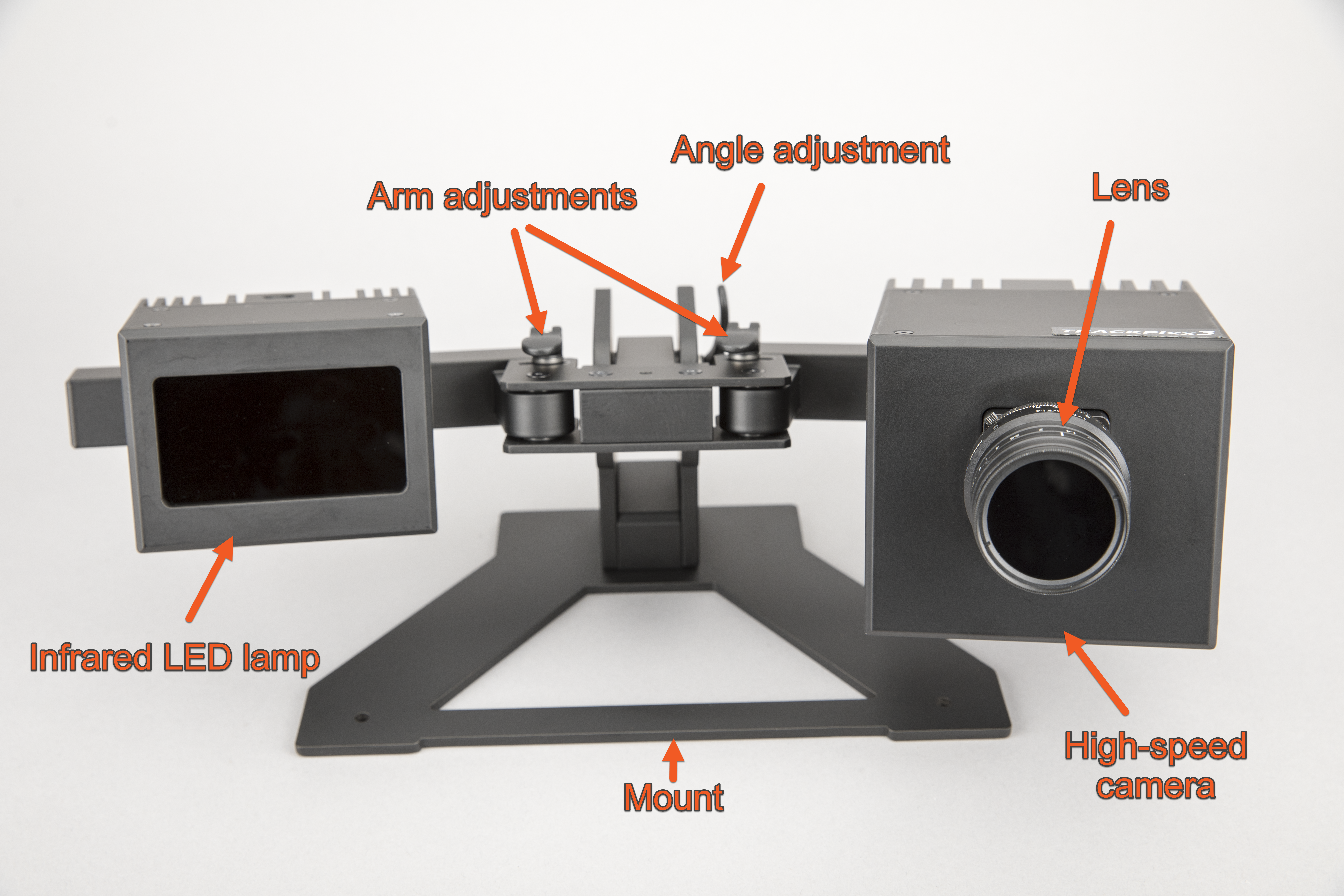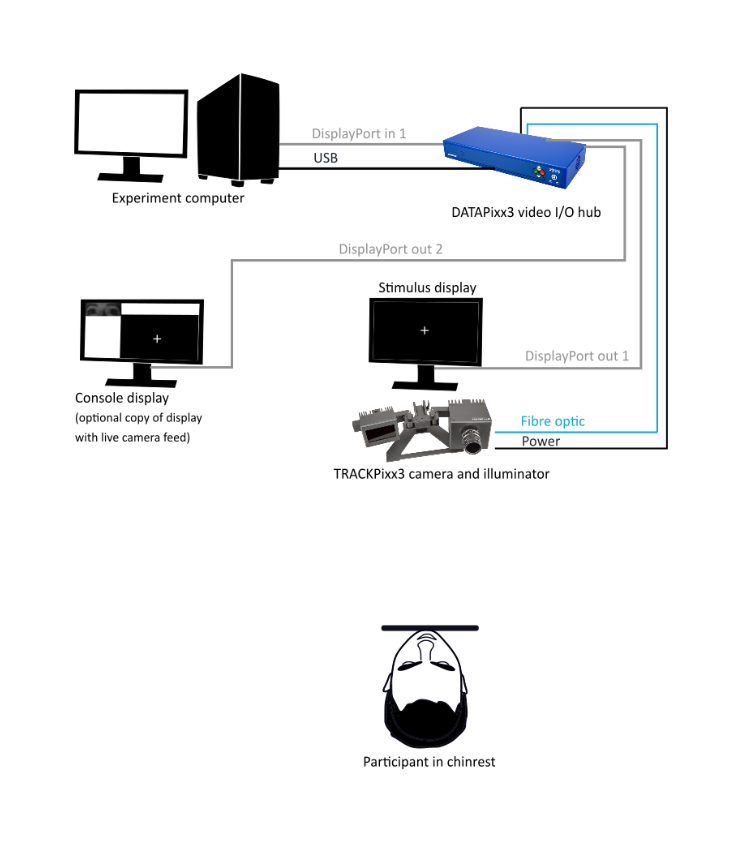The TRACKPixx3 is a passive infrared binocular eye tracker. The device consists of an infrared LED lamp and a high-speed camera with a detachable lens. These components are mounted on an adjustable metal bracket, and positioned below your experiment display.

During data collection, the lamp bathes the participant’s face and eyes in non-visible infrared light, which the camera records. An image-processing algorithm determines the shape of the pupil and locates its center. It also identifies the corneal reflection, a bright spot created by the infrared light reflecting off the front surface of the eye.
VPixx hardware computes the vector between the pupil center and corneal reflection, which we call the pupil-corneal vector. This vector is used as the basis for determining where the participant is looking on the screen.

In order to interpret this vector properly, the TRACKPixx must have a notion of how this vector changes as a function of where your participant is looking on the screen. This relationship depends on a lot of external factors, like the size of your participant’s eyes, the position of their head, the size of the screen, the type of camera lens, and so on.
For this reason, before any eye tracking session begins you must perform a calibration procedure, to build up a model of your specific participant’s pupil-corneal vector dynamics. We will cover how to run a calibration procedure later in this project.
The pigment of your iris looks different under infrared light. Dark brown eyes reflect more infrared light, which shows up as a light-coloured iris in the eye tracker video feed. Pale blue or green eyes absorb more infrared light, making them appear darker in the camera view.
The TRACKPixx3 is connected to your computer via a DATAPixx3 video I/O hub. This hub also acts as an intermediary between your computer and stimulus display. It can optionally send a copy of your graphics card output to a second, “console” display. The console can be used by the experimenter to track progress, and is particularly useful if the experimenter is in another room, or cannot see the stimulus display easily.
The console also displays a live feed of the eye tracker in the top corner of the screen.
For more details on how to set up your TRACKPixx3 for the first time, please consult the installation guide that was included with your purchase. Installation guides can also be found in our online library.

The DATAPixx3 I/O hub may also be connected to other peripherals. It can send and receive digital signals on two DB25 ports, enabling experimenters to log outgoing and incoming data on the same clock as eye tracking data. It can also send out analog eye position data via a third DB25 port, which may be connected to a recording rig like an EEG system. A DATAPixx3 “Full” unit can also play and record audio, and send and receive analog signals other than eye data.